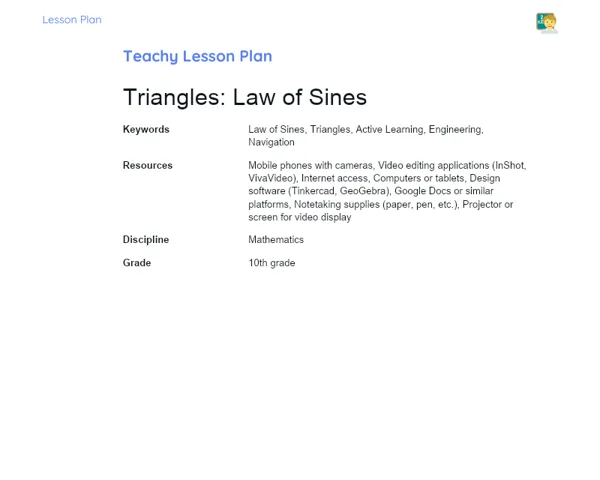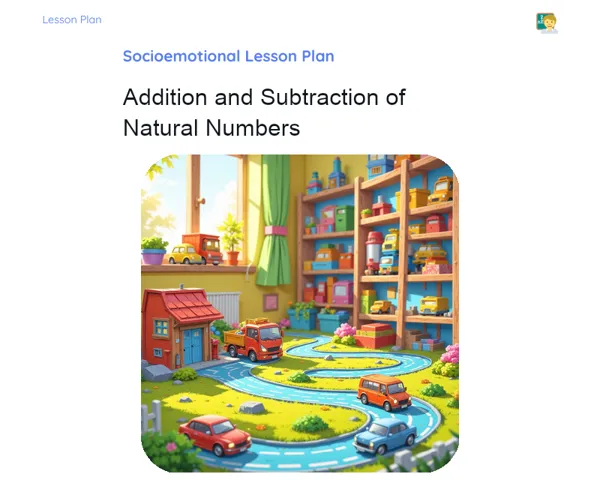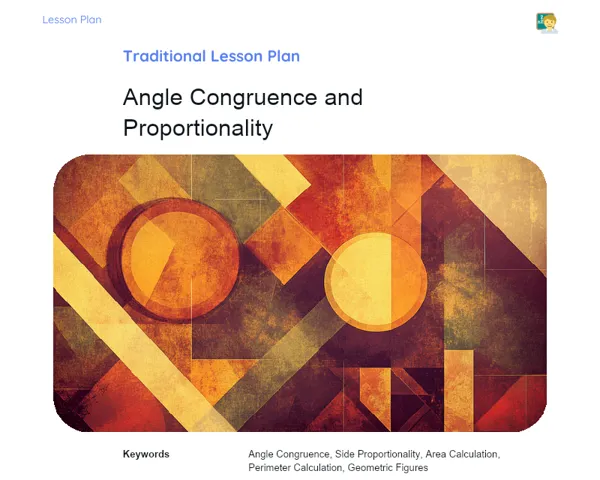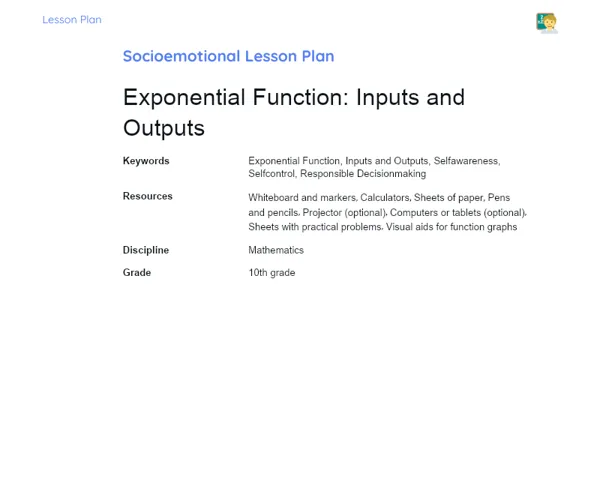Lesson Plan | Active Methodology | Determinant: Laplace
| Keywords | Laplace's theorem, Determinants of matrices, Applied mathematics, Hands-on activities, Problem-solving, Team collaboration, Effective communication, Real-world applications, Critical thinking, Mathematical challenges |
| Necessary Materials | Printed magic matrices (from orders 4x4 to 6x6), Scripts for 'Matrix Theatre', Timer, Whiteboard and markers, Copies of determinant rules for different matrices, Classroom arranged into workstations |
Premises: This Active Lesson Plan assumes: a 100-minute class duration, prior student study both with the Book and the beginning of Project development, and that only one activity (among the three suggested) will be chosen to be carried out during the class, as each activity is designed to take up a large part of the available time.
Objective
Duration: (5 - 10 minutes)
Defining the objectives is essential to keep both students and teachers focused during the lesson. By outlining the expected outcomes, this section acts as a roadmap, ensuring that subsequent activities remain directed and effective. Moreover, it aids students in understanding the significance of the content and its value, encouraging active participation in their learning.
Objective Utama:
1. Help students grasp the concept of Laplace's theorem and apply it to calculate determinants of matrices larger than 2.
2. Build skills in using Laplace's theorem across various contexts, supported by practical examples and exercises.
Objective Tambahan:
- Foster teamwork and critical thinking via group activities.
Introduction
Duration: (15 - 20 minutes)
The aim of the introduction is to engage students and recap prior learning through problem situations that encourage practical use of Laplace's theorem. Contextualizing the content connects theoretical concepts to real-world applications and historical facts, boosting students' interest and demonstrating the relevance of studying determinants across different disciplines.
Problem-Based Situation
1. Imagine a 4x4 matrix A = [(a11, a12, a13, a14), (a21, a22, a23, a24), (a31, a32, a33, a34), (a41, a42, a43, a44)]. How would you use Laplace's theorem to determine the value of A?
2. If you’re tasked with finding the determinant of a 5x5 matrix, B = [(b11, b12, b13, b14, b15), (b21, b22, b23, b24, b25), (b31, b32, b33, b34, b35), (b41, b42, b43, b44, b45), (b51, b52, b53, b54, b55)], what steps would you follow to use Laplace's theorem?
Contextualization
Laplace's theorem, established by mathematician Pierre-Simon Laplace in the 18th century, is not only a key mathematical principle but also finds applications in diverse fields like physics, economics, and computer science. For example, in physics, determinants help assess dynamic system properties; in economics, they support mathematical models for predicting market behaviour and decision-making. Such practical applications highlight the theorem's importance and versatility in addressing real-life challenges.
Development
Duration: (75 - 80 minutes)
The development segment encourages students to collaboratively and practically apply their knowledge regarding Laplace's theorem and the computation of high-order matrix determinants. By working in teams, they can discuss challenges and find solutions collectively, while also developing communication and critical thinking skills. Each activity is designed to heighten understanding of Laplace's theorem in an engaging and stimulating manner, ensuring students can solidify and apply theoretical concepts interactively.
Activity Suggestions
It is recommended that only one of the suggested activities be carried out
Activity 1 - The Challenge of Magic Matrices
> Duration: (60 - 70 minutes)
- Objective: Implement Laplace's theorem to resolve determinants of high-order matrices, fostering collaboration and analytical thinking.
- Description: In this activity, students will form groups of up to 5 and receive sets of magic matrices filled with integers. Their task is to compute the determinants of these matrices of varying sizes (4x4, 5x5, up to 6x6) using only Laplace's theorem.
- Instructions:
-
Create groups of up to 5 students.
-
Distribute the magic matrices among each group.
-
Each group must calculate the determinant for every matrix using Laplace's theorem.
-
Following the calculations, groups will prepare a brief presentation explaining their application of the theorem and the results achieved.
-
Hold a class discussion to compare different methods and results among groups.
Activity 2 - Matrix Theatre
> Duration: (60 - 70 minutes)
- Objective: Enhance communication skills and comprehension of Laplace's theorem through an engaging and creative approach.
- Description: Organized in groups, students will receive scripts illustrating scenarios in which Laplace's theorem plays a key role. They will enact the steps for calculating determinants using the theorem, detailing each step during their performance.
- Instructions:
-
Divide students into groups of up to 5.
-
Provide each group with a script featuring various situations involving Laplace's theorem for determinant calculations.
-
Groups must prepare a theatrical presentation showcasing the theorem's use in each case, explaining each calculation step.
-
Each group will present their play to the class.
-
Conduct a vote to identify the most creative and informative performance.
Activity 3 - Matrix Marathon
> Duration: (60 - 70 minutes)
- Objective: Promote quick thinking and accuracy in calculating determinants, fostering healthy competition and team spirit.
- Description: In this competitive activity, student groups will aim to solve the maximum number of matrix determinants within a set timeframe, utilizing Laplace's theorem. Each accurately solved matrix will earn the group points.
- Instructions:
-
Set up the classroom with different workstations, each featuring a distinct matrix and its determinant rules.
-
Organize the class into groups of up to 5 and assign each group to an initial workstation.
-
Each group must solve the determinant for their stationed matrix and then quickly move to the next one.
-
Groups will continue rotating stations until class ends, attempting to solve as many matrices as possible.
-
At the end, tally each group's points based on correctly solved matrices and the time taken.
Feedback
Duration: (15 - 20 minutes)
This feedback stage is critical for solidifying students' learning, allowing them to reflect on the concepts and methods utilized while sharing their experiences. The group discussion helps pinpoint areas of confusion or misunderstanding, enhancing a deeper and more collaborative grasp of Laplace's theorem. Additionally, by discussing key questions, students can articulate their understanding, which is vital for retaining knowledge.
Group Discussion
Initiate the group discussion by briefly revisiting the activities conducted, inviting each group to share the challenges faced and the strategies they employed. Promote the sharing of interesting insights that emerged during the application of Laplace's theorem. Then, ask each group to summarize their conclusions and highlight the most notable results from their tasks. Use this opportunity to link each group's experiences and underscore the theorem's applicability in various scenarios involving higher-order matrices.
Key Questions
1. What were the significant challenges faced when applying Laplace's theorem for determining higher order matrices?
2. In what ways can the knowledge of Laplace's theorem be applied in areas beyond mathematics, such as physics or economics?
3. Were there instances where the theory didn't apply directly? How did the group navigate those situations?
Conclusion
Duration: (5 - 10 minutes)
The conclusion phase aims to reinforce learning, ensuring students can clearly express what they've grasped and how it applies across different contexts. Through summarizing the content, we bolster students' memory and understanding, while underscoring the relationships between theory and practice, evidencing the relevance of studying mathematics in everyday life and future career paths.
Summary
In this final segment of the lesson, it’s essential to recap and summarize the key concepts regarding Laplace's theorem and the calculation of determinants for higher order matrices. Students had the chance and practical experience to solidify their learning, reinforcing their comprehension of the methods involved and the determinant's significance across various applications.
Theory Connection
Today’s lesson connected Laplace's theorem theory with practical applications and real-life contexts through activities such as 'The Challenge of Magic Matrices', 'Matrix Theatre', and 'Matrix Marathon'. These exercises not only showcased the theorem's application in diverse situations but emphasized the necessity of seeing mathematics as a practical and versatile tool.
Closing
Ultimately, it's vital to underscore the relevance of Laplace's theorem not just in academic scenarios but also in real-world applications spanning physics, economics, and computer science. Mastering the calculation of determinants for higher order matrices prepares students to tackle complex problems and make informed decisions across various professional domains.



